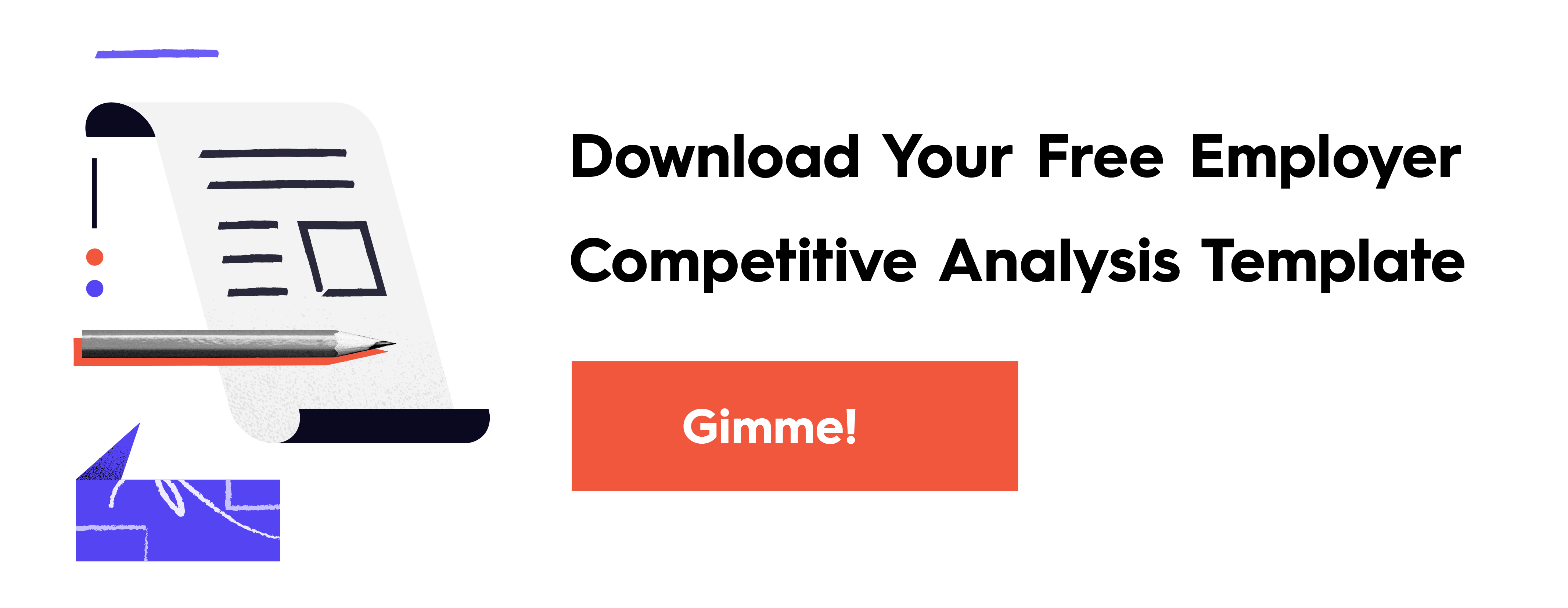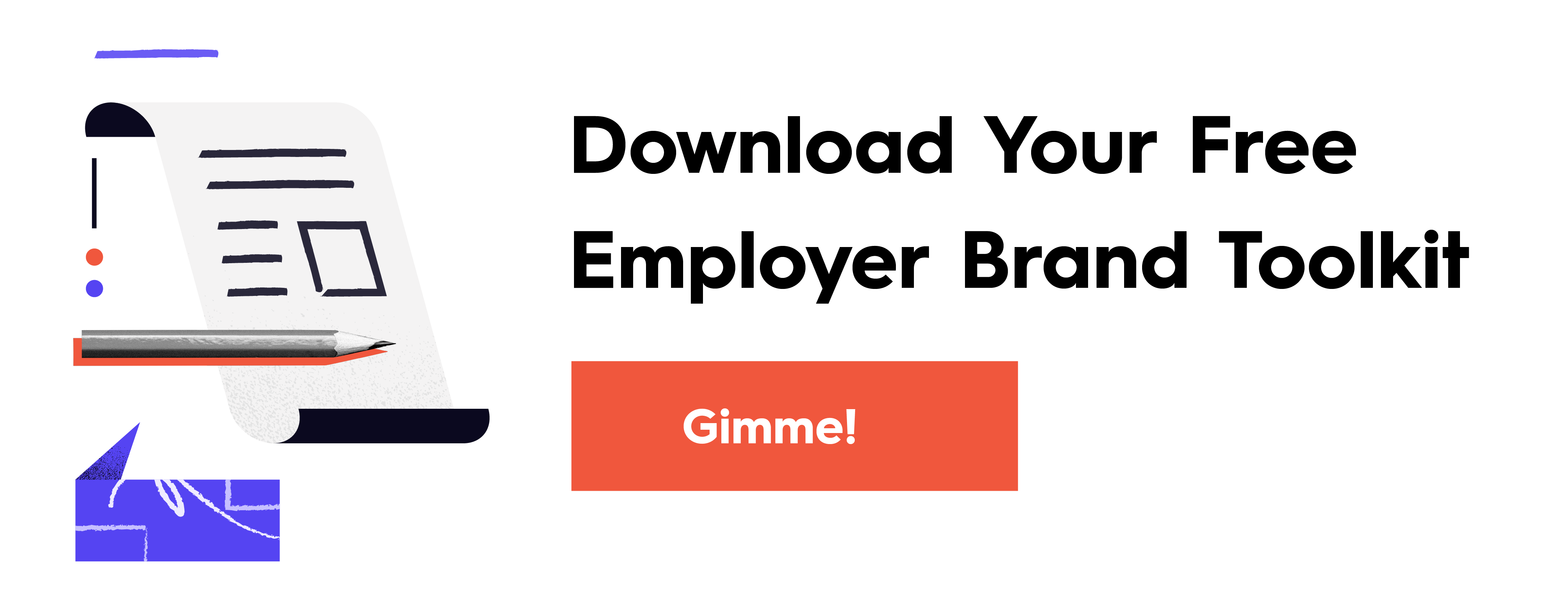According to iHire’s 2019 Employer Branding Pulse Survey, 59.3% of companies either don’t have an employer branding strategy, or don’t know if they do. If you fall into that camp, it’s time to remedy that ASAP.
The hiring game has changed. Job candidates expect a lot more than a paycheck these days. Crowded job markets mean more competition is fighting for your talent. And public perception about your brand is more powerful than ever. How do you find and keep the best people, and unite them around a shared vision? Answer: Create an employer branding strategy that helps you communicate who you are, why you’re different, and why people should want to work (and keep working) for you.
Before you can do that, however, you need to understand the state of your industry and how you stack up against your competition when it comes to hiring. Here, we’ll walk you through the stages of an Employer Competitive Analysis to show you how to get valuable insight that will help you position your employer brand most effectively and attract the best talent.
What Is an Employer Competitive Analysis?
Similar to a traditional competitive analysis, an Employer Competitive Analysis is a simple audit of how your competition presents its employer brand to the world. By looking at everything from their Employer Value Proposition, to their mission, to their social presence, you can get useful insight into your talent competitors’ strengths and weaknesses, how you stack up in comparison, and how you can differentiate yourself. This lets you approach your own employer brand through a more strategic lens and ensure you’re representing your brand the right way.
Before You Start
Download your free Employer Competitive Analysis Template to work through the steps below.

Step 1: Compile a List of All Competitors
The ultimate goal of this exercise is to understand how others are positioning themselves so that you can use those insights to improve your own employer brand. But that doesn’t mean you’re just looking at how your competition is failing. You want to see how the most successful brands are doing it, then take pointers from them. For this reason, start by jotting down all the competitors that you can think of in three main categories:
- Local competitors: Who is your direct competition? Who is most likely to poach your talent? One easy way to find these is to look at is LinkedIn’s Talent Insights talent flow tool, which shows you which companies people came to you from and left you for. Another way is to keep records in your talent software about people’s employers immediately preceding and succeeding their role at your company.
- Industry competitors: Who do you want to be in competition with? What are the larger brands in your industry you’d love to disrupt?
- Aspirational competitors: Who are the brands that you admire? Who has a culture you aspire to? Who attracts the type of talent you wish you had? These brands may not be your direct competition, or even in the same industry, but they may be role models for how you shape your employer brand (e.g., Apple or Warby Parker).
Once you have this list, narrow it down to 10-15 main competitors. (You’ll probably want to include one or two of your Aspirational brands in this list.)
Step 2: Start Your Employer Competitive Analysis
Now it’s time to research. Note: You can document additional elements in your analysis. Our template simply ensures you cover the basics. Also, remember that you want to document enough to information to give you helpful insight, but not so much that you overwhelm yourself.
That said, you can start by filling in your template. Research one competitor at a time, and document what you observe about their employer brand touchpoints, including their:
- EVP (Employer Value Proposition)
- Brand Heart (purpose, vision, mission, values)
- Website (Career Page, Team Page, About Us, Testimonials)
- Social media accounts (Facebook, Twitter, Instagram)
- Recruiting channels
- Content & messaging
- Benefits
- Career site profiles (LinkedIn, Monster, Indeed, etc.)
- Locations
- Content formats (videos, articles, posts, etc.)
- Brand Positioning
- Review site ratings (Glassdoor)
- Job Descriptions
- Job Ads
- Application technology
Of course, brands aren’t necessarily going to identify which messages are which. You can make your best guesses, though. Make note of where brands’ websites seem to be leading your eyes, and you can make some assumptions about the hierarchies of what they’re trying to communicate. Pay special attention to the core ideas that a brand seems to be conveying with unique and intentional wording or phrasing, as well as the themes that clearly emerge across different brand statements.
Pro tip: You can use a free SEMrush trial to look up your competitor’s advertising, ranking keywords, etc. as well.
Step 3: Synthesize Your Findings
Once you’ve collected your data, you can do a high-level analysis of your brands.
- What major trends did you notice? For example, if they all have behind-the-scenes videos and you don’t, you might be missing out.
- What do you have in common? How do you differentiate?
- What are their strengths?
- What are their weaknesses?
- Can you tell their brand voice? How are they using it most effectively?
- What gaps did you notice in their messaging? For example, if they focus on their work but don’t say much about their values, you may be able to differentiate yourself by leading with your Brand Heart.
- What tools are they using? Are there things that make their application process more effective that you could benefit from too (e.g., auto-forms or personalization)?
- How are they positioning themselves? Where do you fit in?
Try to boil things down into “points of parity and differentiation.” In other words: What are most competitors saying (such that it almost feels like table stakes in your landscape), and what are individual brands saying uniquely?
With these insights, you should be able to more clearly identify your market position. You may also want to do a quick whiteboard exercise to plot it.

Step 4: Shape Your Strategy
Now that you’ve completed this exercise, you should have more clarity around your brand’s unique traits, feel more empowered to attract the best talent, and be inspired to revamp your employer brand at every level. If you’re looking for next steps…
- Complete an employer branding audit. Now that you’ve looked at your competition, you should look at how your own brand measures up. Follow our guide to do an internal analysis of your brand, based on insight from current and former employees. And see our complete guide to building an employer brand for more tips to put these insights to work.
- Write your Employer Value Proposition. Your EVP is a powerful tool to entice people to work with you. Find out how to write one that will highlight your unique benefits (and outshine the competition).
- Map your employee journey. Find out how to identify the strengths and weaknesses in your employee experience to improve the journey at every stage.
- Tell stronger stories. Find out how to keep your messaging consistent, and tell interesting stories about your culture.
But if you’re not sure how to tell your employer brand story through the right channels, don’t worry. We’re happy to talk about how we can help you connect with—and keep—the best talent.





